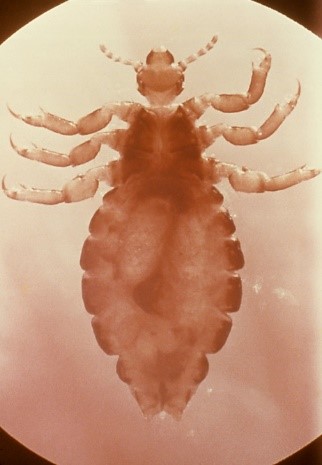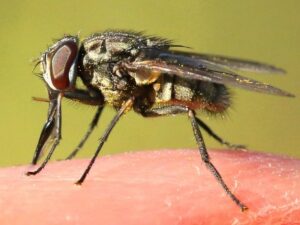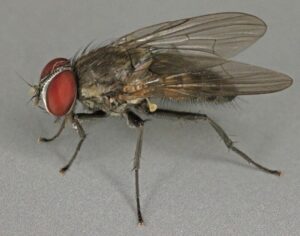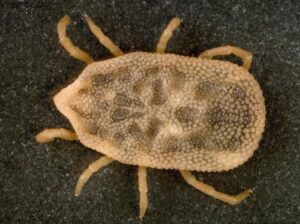Head Louse:
Identification
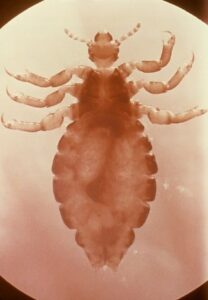
- The lengths of the female is 3 mm and 2 mm in the male.· The adult is about the size of a sesame seed, has 6 legs, and is tan to grayish-white.
- The nymph looks like an adult.
- Eggs (also called nits) are 0.8 mm by 0.3 mm, oval, and usually yellow to white.
Life Cycle and Common Characteristics

- The louse takes the color of the hair on which it lives on, or it is white or gray, and the preferred place for its living is the place where the hair grows.
- The eggs of this lice stick to the hair, and along with the skin of the head and the scales of dead lice form a thick layer that mixes with dirt and soil, allowing the growth and reproduction of other secondary parasites such as fungi and bacteria that live on these materials and cause other diseases to the infected person.
|
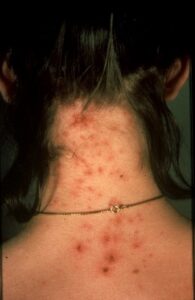
Credit: KostaMumcuoglu |
Damage and Medical Implications
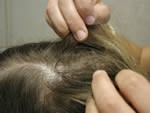
- Head lice are the most commonly encountered by pest control professionals. They are most common in school students where they infest the head and neck.
- Head lice infestation, or pediculosis, is spread most commonly by close person-to-person contact by sharing the use of personal items, such as hats, hairbrushes, combs, or wigs.
- Dogs, cats and other pets do not play a role in the transmission of human lice.
- Head lice are not known to transmit any disease and therefore are not considered a health hazard.
- Itching is the most common symptom of head lice infestation and is caused by an allergic reaction to louse bites.
- It may take 4–6 weeks for itching to appear the first time a person has head lice.
- Other symptoms are a tickling feeling or a sensation of something moving in the hair, Irritability and sleeplessness, and sores on the head caused by scratching.

